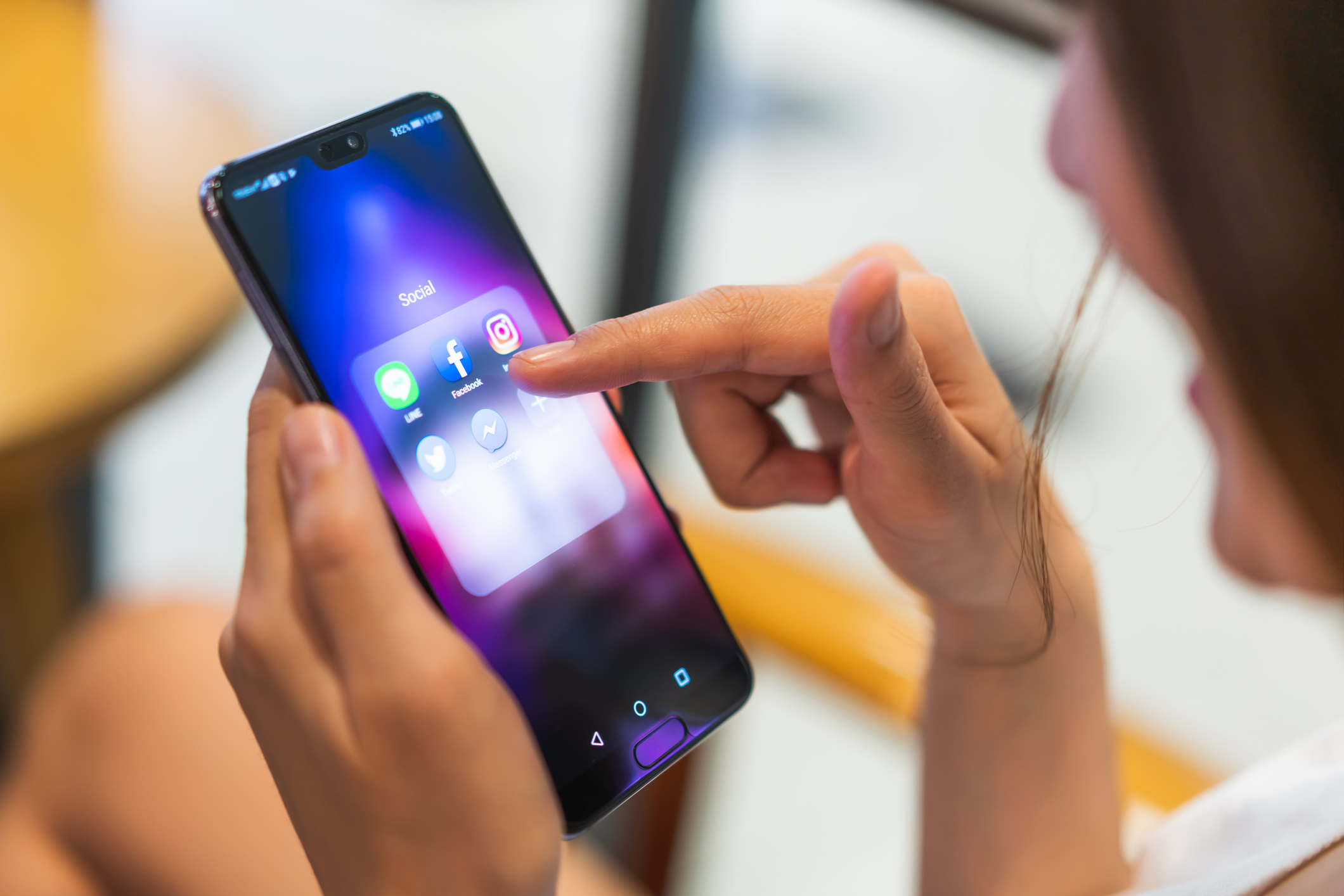Timing is Everything: A Scheduled Plan for Your Social Media Presence
Vamsi K. Kanuri, PhD, Yixing Chen, PhD Candidate, and Shrihari (Hari) Sridhar, PhD
 Do potential clients find you on Facebook and engage with your content? When you post content, is there a strategy, or do you only post when you think about it or when you get something new? Some people prefer a strategy known as “spray and pray”— simply throwing content out on social media and hoping something sticks. Part of your strategy may include “boosting” posts as targeted content advertising (TCA). If you do pay to boost some of your posts, are you absolutely confident that you are creating value with the dollars you are spending? The truth is, most real estate agents are very busy, and few agents are at the peak of their social media effectiveness. But as social media platforms mature, strategies must also mature to remain effective.
Do potential clients find you on Facebook and engage with your content? When you post content, is there a strategy, or do you only post when you think about it or when you get something new? Some people prefer a strategy known as “spray and pray”— simply throwing content out on social media and hoping something sticks. Part of your strategy may include “boosting” posts as targeted content advertising (TCA). If you do pay to boost some of your posts, are you absolutely confident that you are creating value with the dollars you are spending? The truth is, most real estate agents are very busy, and few agents are at the peak of their social media effectiveness. But as social media platforms mature, strategies must also mature to remain effective.
In an attempt to piece together a more effective social media content strategy, we conducted a study seeking to quantify the impacts of social media posts based on time of day, emotionality of the content, whether content requires high cognitive effort, and the results of boosting. Our basic hypothesis was that posting social media content in the morning would be more effective than doing so in the afternoon, with a bit of a rally in the evening. We also hypothesized that social media content with high-arousal emotions would similarly be most effective in the morning, least effective in the afternoon, and moderately effective in the evening. As we considered posts which require more cognitive stimulation, we theorized that such posts would be most effective in the afternoon, moderately effective in the evening, and least effective in the morning. Finally, we theorized that boosted posts would be most effective in the afternoon, moderately effective in the evening, and least effective in the morning.
The Importance of Working Memory
We based our hypotheses on the concept of working memory availability, or how much mental energy people have to store and manipulate information for different tasks during different times of the day. The human mind can only juggle so many subjects at one time, pushing all other subjects into more long-term memory. The working memory availability one has varies throughout the day. For example, your clients potentially have more mental energy to devote to your social media posts in the morning before the day has become stressful or tiring. We hypothesized that because the working memory one can access decreases as the day gets busier, attention to posts would decrease in the afternoon and then rebound in the relaxed evenings. Accordingly, there would be similar availability of working memory to process highly emotional posts during these times. As the brain engages with more complex problems at work throughout the day, accordingly, we asserted that cognitively engaging posts would perform best in the afternoon. Boosted posts, we thought, would perform best in the afternoon because of how they successfully break into otherwise expected norms on someone’s social media feed. At this point in the day, anything which breaks expected patterns will bring more attention, so a post from a fairly unknown real estate agent with a house in a neighborhood that a user has been considering may seem unique enough to cause further exploration. These were our theories based on what we know about working memory, but we carried out a study to quantify these ideas and see if our hypotheses play out this neatly in real social media contexts.
The Study
We studied 5,706 Facebook posts from a top-50 American newspaper employing a social media manager who admittedly did not have a social media strategy beyond a few tidbits of common-sense advice (waiting 30 minutes between posts, for example). Using link clicks as the primary measure of engagement, we recorded the time of the posts, grouping them into four categories (morning, afternoon, evening, and night). We then studied more specialized factors—such as whether the content was “boosted”—and determined whether the content called for high-arousal emotions or high cognitive processing. Because we know that the content a newspaper posts varies widely from content other professionals post, we included statistical controls for these differences. We also account for Facebook’s algorithmic bias and strategic posting behavior of the social media manager. Though agents likely do not have the same reach as a major newspaper, the results we found in this study should be helpful to those in the real estate industry.
The Results
In testing our four hypotheses, we found first that, indeed, content posted in the morning receives more clicks than in the afternoon, but surprisingly, afternoon and evening were roughly equal. Second, posting content with negative high-arousal emotions (e.g., angry) performed better in the morning, while performing roughly the same in the afternoon and evening. Working memory likely plays a large role in this observation. Posting content with positive high-arousal emotions did not present an observable trend. Content which required higher cognitive processing performed better in the afternoon and evening, with decreased performance in the morning. Boosted posts performed, as we expected, better in the afternoon, but about equally in the morning and evening. While these results make some sense, what actionable conclusions can we draw from them?
In our study, we articulated five general managerial takeaways:
- Post your non-boosted content in the morning: people are paying attention without needing differentiation during that time. Non-boosted posts performed 8.8% higher in this time period.
- Boost your post in the afternoon when it is most effective. Boosted posts were clicked 21% more in the afternoon compared with boosted posts in the morning.
- If you’re going to post negative social media content with high-arousal emotions, schedule it in the morning. This kind of content was 1.6% more effective in the morning.
- If you have a social media advertising budget, re-allocate the money to more effective times of day rather than investing more.
- Boosting effectiveness has diminishing returns. It is helpful to give some money to social media boosting, but beyond a moderate investment, returns are not nearly as effective.
Conclusions
Prioritize your best and most important/interesting posts in the morning. Things like exciting new listings, advice for movers, and showcasing the competitive advantages you offer along with your unique place in the market can be shared in this time slot. The working memory of your followers will allow for these more exciting posts to be received best before noon.
 Second, limit the highly emotional content you share, but when you do, try to post it in the morning as well. Posts about dramatic price improvements or a touching news story involving real estate might work best in this time slot. These emotions will be better processed when users still have the working memory of a new day, and posting early could drive up clicks.
Second, limit the highly emotional content you share, but when you do, try to post it in the morning as well. Posts about dramatic price improvements or a touching news story involving real estate might work best in this time slot. These emotions will be better processed when users still have the working memory of a new day, and posting early could drive up clicks.
Third, have fun with your posts in the evening. Share things like questions and polls, fun facts about yourself or the kind of sales and results you get, interactive articles about what house may be best for clients, etc. After a long work day, users are beginning to regain some working memory, so these posts may be most effective in this time slot.
Finally, don’t spend much more of your money boosting ads; simply spend that money better! In general, spend these dollars in the afternoon. Don’t neglect posting in the afternoon, just remember that boosted posts are probably your best bet in this time slot.
If you are worried about your professional social media presence, take heart! Effective social media is not only possible for a busy real estate agent, but can be scheduled to receive the most attention from your followers. With a little thought, consistency, and a schedule, you can become a more effective social media manager.
. . . . . . . . . . . . . . . . . . .
Recommended Reading
Kanuri, Vamsi K., Yixing Chen, and Shrihari (Hari) Sridhar (2018), “Scheduling Content on Social Media: Theory, Evidence, and Application,” Journal of Marketing, 82(6), 89-108.
. . . . . . . . . . . . . . . . . . .
About the Authors
Vamsi K. Kanuri, PhD
Assistant Professor of Marketing, University of Notre Dame
Dr. Vamsi Kanuri’s (PhD – University of Missouri) research interests are in applying econometric, optimization, and machine learning techniques to offer prescriptive insights into topical marketing challenges involving the effectiveness and deployment of marketing instruments. Vamsi’s research has appeared in leading marketing and management journals including the Journal of Marketing, Journal of Marketing Research, Strategic Management Journal, and Harvard Business Review, among other journals, books and popular press outlets. His research has been a finalist or winner of several prestigious academic awards, including the MSI/H. Paul Root Award (finalist) from the American Marketing Association, Paul E. Green Award (finalist) from the American Marketing Association, Elwood Buffa Award (winner) from the Decision Sciences Institute, George B. Dantzig Award (honorable mention) from the INFORMS, and Mary Kay Award (finalist) from the Academy of Marketing Science.
Yixing Chen, PhD Candidate
Texas A&M University
Yixing Chen is a PhD candidate in Business Administration (Marketing) and teaches Marketing Analytics at the Mays Business School at Texas A&M University. In July 2020, Yixing will join the Mendoza College of Business at the University of Notre Dame as an Assistant Professor of Marketing. Yixing’s research adds novel insights to the rich tradition of developing marketing-mix models to help executives quantify the return on marketing investments.
Shrihari (Hari) Sridhar, PhD
Joe Foster ’56 Chair in Business Leadership, Professor of Marketing, Presidential Impact Fellow, and Research Director of the Sales Leadership Institute, Texas A&M University
Dr. Shrihari (Hari) Sridhar’s (PhD – University of Missouri) use of quantitative models and advanced data science help firms assess and improve the effectiveness of their strategy and resource allocation. His current focus is on the deployment of machine learning to companies in the business-to-business (energy, education, media) sector. Sridhar has published in various top-tier academic and practitioner outlets, such as Harvard Business Review, Marketing Science, Journal of Marketing, and the Journal of Marketing Research. He currently serves as Area Editor for the Journal of Marketing Research, Journal of Marketing, and Journal of the Academy of Marketing Science. He is on the Editorial Board of Journal of Retailing. His research has been featured in National Public Radio (NPR), Reuters Inc., FOX News, Forbes, and Booz & Co. and won several research awards. He was recognized with the Marketing Science Institute’s Young Scholar Award, and, in 2014, he was the youngest and only untenured faculty to receive the Varadarajan Award for Early Career Contributions to Marketing Strategy Research.